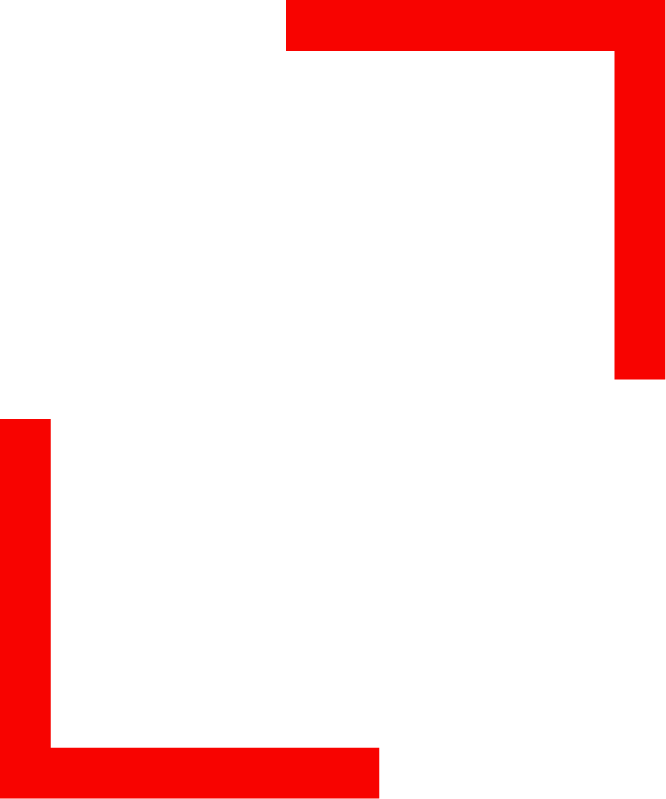Clearing a pharmaceutical name is complex. To devise a robust and efficient search strategy, rights holders need to know how to assess the similarity of goods and services in this field since a multi-sector assessment applies in Switzerland as in Europe.
The first hurdle is the high number of trademarks in Class 5. This was the fifth most applied-for class in Switzerland in 2022 (1). One reason for this is the need for backup trademarks due to the risk of the regulatory authorities refusing the name and the long approval time, which is about two years for Swissmedic, the Swiss Agency for Therapeutic Products (2). Another reason is that the chemical/pharmaceutical industry is highly competitive. Switzerland is the second-most competitive location in this industry (3), which is also the top exporting sector in the country (4). Further, a lot of international companies operating in this field are domiciled in Switzerland. Considering the Madrid Protocol regulations, many new names are filed in Switzerland to serve as basic trademarks for the filing of international registrations.
Also, pharmaceutical companies usually wish to use a single name for all geographies of use.
On top of that, in this industry especially, the stakes are high since the purpose is to prevent illegal drugs. Globally, seized fakes that infringe Swiss IP represented 2.5% of total seized value of fake pharmaceuticals in 2016 (5).
Why a thorough search is paramount
A thorough search is required notably when filing a Swiss trademark in the frame of a global protection plan. Indeed, a stable and incontestable basic registration is critical for the undisturbed existence of the international registration during the dependency period (6).
In addition, the search scope must include trademarks designating goods beyond the pharma sector. The courts adopt a broad approach when assessing similarity in this regard, as illustrated in the recent Tissot case (7).
Broadly speaking, goods or services are similar if, when they are exposed to similar marks, the relevant public can believe that they come from the same undertaking or they are produced by economically linked undertakings (8). Evaluation criteria can include substitutability, technology, know-how, general purpose, manufacturing locations, distribution channels and circles of recipients. Between a good and a service, courts will examine whether the service mark’s owner could be seen as also active in the good’s manufacturing and distribution or vice versa (9).
The destination of the goods is also key. For example, enzyme-based brewing preparations and enzyme-based medicinal products are different because the former is intended for brewers, the latter for medical staff and patients (10). However, Class 32’s “non-alcoholic beverages” are similar to Class 5’s “beverages for infants and young children” because they can be intended for the same users (11).
Risks of similarity in the pharma space
A low degree of similarity is held for “pharmaceuticals and other preparations for medical purposes” and “chemicals products intended for agriculture, horticulture and forestry” in Class 1 because only a few processing steps are needed for them to be considered finished products (Tissot case). The same reasoning applies at EU level (12).
In Class 3, “cosmetics, personal care products” and “essential oils” are important to consider due to the sale of cosmetics in pharmacies, and, especially with so-called “cosmeceuticals”, such products having the same purpose as pharmaceuticals: a healing effect (13). A similarity to a low degree can be retained. This is aligned with EU standards (14).
In Class 5:
– “pharmaceutical preparations” have potentially similar distribution channels (eg, doctors and pharmacists), production locations, know-how and purpose (15). Even if the goods specifically claim to treat different diseases, their general purpose is identical: treating diseases. This cannot be solely relied on, but in tandem with another factor (eg, perception of the manufacturing locations being in the same place), results in similarity. Specific pharmaceuticals are considered to be similar to others at the EU level, too (16).
– “veterinary preparations” are found highly similar to “pharmaceutical preparations” because without further specification both include veterinary medicinal products and they share the same manufacturing know-how. Also, some pharmaceutical companies are active in both human and veterinary medicine and these goods are all subject to the Therapeutic Products Act (17). This similarity is also held by EU authorities.
– “preparations for destroying vermin and fungicides” are classified as pharmaceutical preparations (18). Likewise, from an EU perspective, these goods are similar to “pharmaceutical preparations”, to a low degree, because of their purpose, complementarity and distribution channels (19). In practice, while agrochemicals and pharmaceutical industries tend to coexist peacefully, some applicants still file broad specifications, and conflicts occasionally occur.
– “plasters, materials for dressing” are found similar (20).
In Class 10, “medical apparatus and instruments” can be similar due to their complementarity. Some pharmaceuticals are sold with an instrument under the same name, such as syringes filled with an active ingredient. Moreover, they have the same purpose, target public and distribution channels (21).
Where similarity is denied
No similarity is retained with mere chemical products, in Class 1, which are raw materials, as is ruled in Europe too (22).
“food supplements or dietetic foodstuffs” in Class 5 are produced in different places and serve different purposes (23). The approach is the same at the EU level (24).
“material for stopping teeth” in Class 5 are found dissimilar (25).
“electronic apparatus for detecting, storing, tracking, monitoring and transmitting data relating to the user’s state of health” in Class 9 have a different know-how and production sites. The mere fact that smartwatches are used, among other things, to monitor sporting activities for medical purposes is not in itself sufficient to retain the similarity (26).
“foodstuffs and beverages” in Classes 29, 30 and 32 are found dissimilar (27).
“retailing services” – including “retailing of pharmaceutical products” in Class 35 should be disregarded since these services are dissimilar to goods in Classes 1 to 34 (28).
In Class 42, “pharmaceutical research and development services; research in the field of chemistry; medical research” are offered by different providers and manufacturers (29).
Class 44’s “healthcare services” have different know-how, and are neither complementary nor in competition. Also, their providers are not generally active in the manufacture and distribution of pharmaceuticals (30).
Restrictive assessment of names
It is worth noting that assessment is more restrictive for the similarity of names. First, these are often short terms. Since short names are audibly and visually striking, they are more easily remembered than long terms, making small variations sufficient to differentiate them (31). Consequently, similarity is usually excluded where terms differ in their final and central syllables, such as eg SIGNIFOR and SIGNASOL (32). Also, terms can be comprised of a descriptive element (eg, an indication of the good’s effects or the name of the molecule), which results in a low degree of distinctiveness allowing enough differentiation, such as eg DOLOCAN and DOLOCYL, the element DOL being an indication of the analgesic effect of the goods (33).
Further, it is considered that the relevant public will be highly attentive. This is because the public includes medical professionals. Also, regarding no-prescription pharmaceuticals, goods which affect consumers’ state of health are purchased with more attention than those for everyday use (34). It follows that small differences are more likely to be noticed than with respect to ordinary marks. This standpoint is aligned with that of the EU case law (35).
The path forward
Based on the above considerations, thoroughly reviewing identical/similar marks in the core Class 5 is critical but also search for identical/nearly identical marks in the neighboring classes that could cause conflict. As part of the thin balance between budgets allocated to clearance and the need for mitigating infringement risk, screening beyond Class 5 for close marks – which is sufficient if the candidate’s name is short or weak – can allow to identify the biggest obstacles. Adopting this approach does not incur high additional costs and adds value to the clearing process.
To tackle obstacles, one of the avenues is to file the trademark with a limitation of the specification, by e.g. specifying that the goods have pharmaceutical and medical purposes, or their exact intended purpose, or by specifically excluding goods indented for use in an industry which could be conflicting.
Nathalie Denel, Intellectual Property Lawyer
July 27, 2023
_____________________________________________
1 Statistics from the Federal Swiss Institute of Intellectual Property (hereinafter « the Institute”) available at https://www.ige.ch/en/services/publications/statistics/trade-marks
2 “Benchmarking 2020 – Comparison of Swiss approval times for human medicines with the EU and the USA and analysis of national authorisation procedures” available at
https://www.swissmedic.ch/swissmedic/en/home/humanarzneimittel/authorisations/information/studie-zulassungszeiten-ham-schweiz-2020.html
3 “2022 edition of the Global Industry Competitiveness Index” available at https://www.scienceindustries.ch/_file/32652/bak-economics-scienceindustries-global-industrycompetitiveness-
index-gici-2022.pdf
4 Paper “Chemical and pharmaceutical industry”, Federal Department of Foreign Affairs, updated in March 2022 available at https://www.eda.admin.ch/aboutswitzerland/en/home/wirtschaft/taetigkeitsgebiete/chemie-undpharma.html
5 OECD and Institute “Counterfeiting, Piracy and the Swiss Economy” report, 2021, available at https://www.oecd.org/gov/illicit-trade/counterfeiting-piracy-and-the-swiss-economy.pdf
6 Article 6(3) of the Madrid Protocol, 12 November 2007 and p 796-798 of WIPO’s Guide to the Madrid System International Registration of Marks under the Madrid Protocol, updated 2022
7 Federal Administrative Court (FAC)’s decision, 12 August 2022, no B-1590/2021 – TISSOT
8 Part 6, Section 6(1) of the Institute Trademark Guidelines, updated in July 2023
9 Part 6, Sections 6.1.1.1, 6.1.1.2 and 6.1.3 of the Institute Trademark Guidelines
10 Institute’s “Leaflet: Is there a risk of confusion?”
11 Institute’s decision, 28 February 2018, no 14843 – HERO (Fig.) / HEERA (Fig.)
12 Part C, Section 2, Chapter 2, Point 5.1.1 of EUIPO Trademark Guidelines, updated 2023
13 Institute’s decision, 5 April 2023, no 10874-420/7
14 Part C, Section 2, Chapter 2, Annex II, Point 5.1.3 of the EUIPO Trademark Guidelines; General Court’s
decision, 3 May 2023, no T-303/22 – Dicofarm SpA v EUIPO
15 FAC’s decision, 12 August 2022, no 5404/2021 – VIFOR / Vitop
16 Part C, Section 2, Chapter 2, Annex II, Point 5.1.2 of EUIPO Trademark Guidelines
17 Federal Supreme Court’s decision, 5 February 2014, no 4A_444/2013 – G5; FAC’s decision, 11 March 2013, no B-1760/2012 – ZURCAL / ZORCALA; Institute’s decision, 31 March 2021, no 101587 –
YESCARTA / YESMARIA (Fig.)
18 Institute’s decision, 16 February 2012, no 11795 – ZEDARA / Zilara
19 General Court’s decision, 13 May 2015, no T-169/14, Ferring v EUIPO
20 Institute’s decision, 22 April 2022, no 102322 – HORMETA / harmeta
21 Institute’s decision, 21 October 2022, no 102456 – KITE PHARMA / KITE XS
22 Part C, Section 2, Chapter 2, Point 5.1.1 of EUIPO Trademark Guidelines
23 Institute’s Newsletter 2016/04-05; FAC decision, 5 October 2021, no B-4714/2020 – DOLOCYL / DOLOCAN
24 General Court’s decision, 30 November 2022, no T-12/22 – Hasco TM sp z oo spk v EUIPO
25 Institute’s decision, 22 April 2022, no 102322 – HORMETA / Harmeta
26 Institute’s decision, 7 April 2022, no 100722 – TISSOT
27 FAC’s decision, 26 October 2010, no.B-3064/2010 – Danone v Nestlé, The Institute
28 Part 6, Section 6.1.3 of Institute Trademark Guidelines; Federal Supreme Court’s decision, 23 May 2019, no. 4A_22/2019 – OTTO’S II; Institute’s decision, 10 March 2023, no 102491 – SERVIER / SEVER PHARMA SOLUTIONS
29 FAC’s decision, 17 August 2010, no B-5390/2009 – ORPHAN EUROPE (Fig.) / ORPHAN INTERNATIONAL; Institute’s decision, 3 July 2020, no 100473 – ONGENTYS / ENGENSIS
30 FAC’s decision, 9 March 2012, no B-2269/2011 – Bonewelding (Fig.)
31 Part 6, Section 6.3.1 Institute Trademark Guidelines
32 FAC’s decision, 16 January 2018, no B-478/2017
33 FAC’s decision, 5 October 2021, no B-4714/2020
34 FAC’s decision, 16 August 2022, no B-5404/2021- VIFOR / VITOP; FAC’s decision, 26 April 2022, no B-2200/2021 – HERVYYTA / Enhervyda (Fig.); Part 6, Section 6.6 Institute Trademark Guidelines
35 General Court’s decision, 3 May 2023, no T-459/22 – Laboratorios Ern, SA v EUIPO

